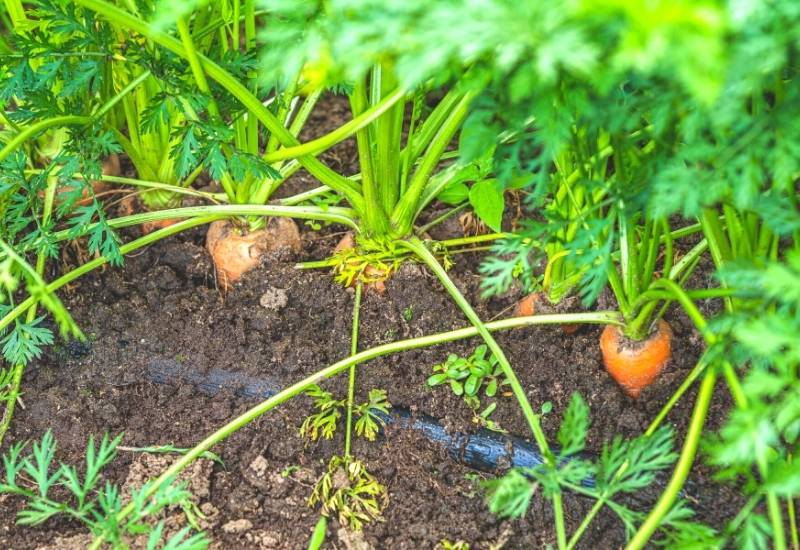The profitability of growing carrots can vary depending on several factors, including the scale of cultivation, market demand, production costs, and quality of the crop. Here are some considerations related to carrot profits:
- Market Demand: Understanding the local and regional market demand for carrots is crucial for determining the potential profitability. Research the demand from wholesalers, retailers, restaurants, farmers’ markets, and other potential buyers. Identify niche markets, such as organic or specialty carrots, which may fetch higher prices.
- Crop Yield and Scale: Carrots can be grown on a small scale in home gardens or on a larger commercial scale. The yield per acre or per square meter will depend on factors such as cultivation practices, variety selection, soil quality, and crop management. Higher yields can contribute to greater profitability.
- Production Costs: Consider the costs involved in carrot production, including seeds, fertilizers, irrigation, labor, equipment, pest control, and post-harvest handling. Efficient management practices can help optimize costs and increase profits.
- Quality and Grading: The quality of the carrots plays a significant role in determining their market value. Consistently producing high-quality carrots with desirable characteristics, such as size, shape, color, and taste, can command better prices and attract repeat customers.
- Marketing and Distribution: Developing effective marketing strategies is crucial for maximizing profits. Create a brand identity, establish relationships with buyers, and explore various marketing channels, such as local markets, community-supported agriculture (CSA) programs, online sales platforms, or direct-to-consumer sales. Efficient distribution and logistics management can also contribute to profitability.
- Value-Added Products: Consider diversifying revenue streams by exploring value-added products derived from carrots, such as carrot juice, carrot puree, baby food, or carrot-based snacks. These products often have higher profit margins than raw carrots alone.
- Seasonality and Crop Planning: Careful crop planning can help optimize profits. Understand the seasonality of carrot production in your region and plan planting and harvest times accordingly. This can help ensure a consistent supply of carrots and potentially capture higher market prices during specific seasons.
- Cost Analysis and Financial Management: Conduct a thorough cost analysis to understand the profitability of carrot production. Track expenses, monitor yields and sales, and keep accurate financial records. Regularly review and adjust your pricing and cost structure to optimize profitability.
- Risk Management: Carrot production, like any agricultural endeavor, is subject to various risks such as weather conditions, pests, diseases, and market fluctuations. Implement risk management strategies, such as diversifying crops, purchasing crop insurance, and staying informed about market trends and potential risks.
It’s important to note that profitability in carrot production can vary widely based on the specific circumstances, market dynamics, and individual business management. Conducting thorough market research, developing a solid business plan, and seeking advice from agricultural and financial professionals can help increase the chances of profitability in carrot farming.



